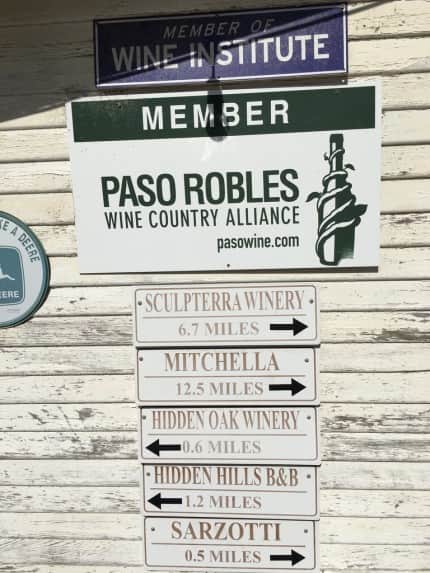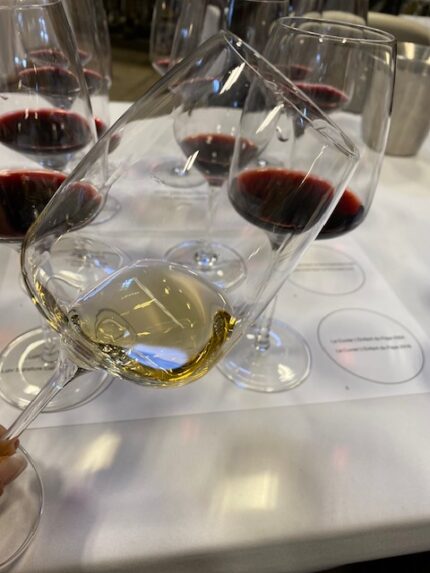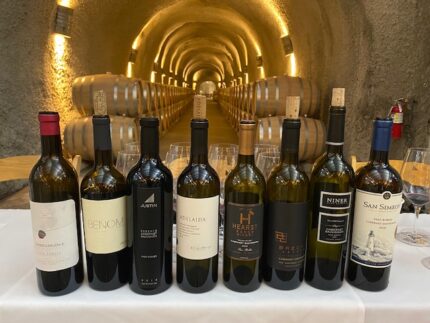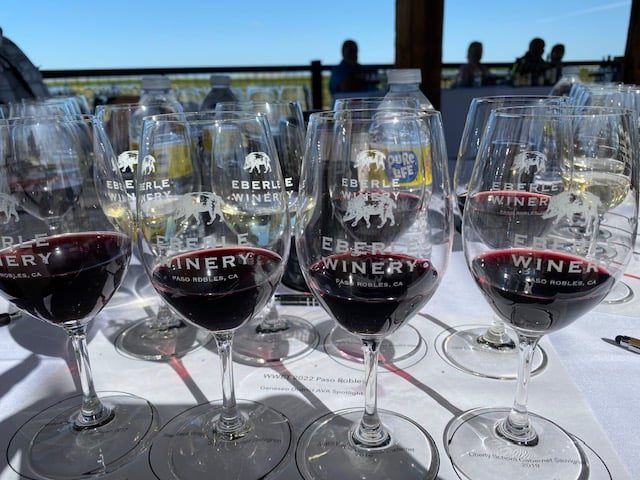
It’s been six years since I’ve had the opportunity to visit Paso Robles, a large, diverse appellation located within San Luis Obispo County in California. Back then it had a Wild West feel to it as the region was diverse and rapidly developing with the special things that would differentiate it as a destination point.
That trip, we focused on wine from the vineyard to glass when I was hosted by the Paso Robles Wine Association. My time at the Wine Writer’s Conference in Paso Robles expanded into the terroir, the people, the diversity, and the hospitality of the region.
The History
Paso Robles (Pass of Oaks translated) has a storied history in wine. Grapes were introduced in 1797 by the Spanish conquistadors and Franciscan missionaries and expanded to 19 acres of wine grapes. Spanish explorer Francisco Cortez had the vision this would be a great wine region and encouraged those in Mexico and California to come. In 1882, Andrew York, who came from Indiana, established a winery that still stands today under a different name as Epoch Winery.
Many of the immigrant ranchers who settled after the Gold Rush moved south to pursue agricultural endeavors bringing along their cultural traditions and became the first commercial wine grape growers in the region.
After Prohibition, growth continued. Paso Robles American Viticultural Area (AVA) was established in 1983 with 17 wineries and 5,000 vineyard acres with Zinfandel as the heritage grape. The real expansion occurred in 1990 when the winery count was 20 and today totals more than 250 wineries.
Paso Robles Wine Country located on U.S. Highway 101 on California’s Central Coast, halfway between San Francisco and Los Angeles.
The Wines

Paso Robles traces its wine history as far back as the 1700’s, but it truly came into its own in the 1960’s when Dr. Stanley Hoffman and André Tchelistcheff planted some of the first Cabernet with vineyard consultant Jack Foote. By the time Paso Robles gained AVA status in 1983, local pioneers including Gary Eberle, Jerry Lohr and Justin Baldwin, had decided Cabernet Sauvignon had unlimited potential.
But the greatest thing about this AVA is that the story didn’t stop here. Paso Robles encompasses 614,000 acres, with 40,000+ acres under vine, established in 1983, and expanded in 1997 then again in 2009, the Paso Robles American Viticultural Area (AVA) is a large, diverse appellation located within northern San Luis Obispo County, comprised of several distinctive grape growing regions (microclimates) generally characterized by rolling hills east of the Salinas River and steeper hillsides, cut by small canyons, west of the Salinas River. You will hear specific geographical features like the Santa Lucia Range, the Salinas River Valley, and the Templeton Gap credited for certain styles. There isn’t a signature varietal or style of wine that the region is most known for, but it’s more of a creative palate the winemakers use to create great wines in many styles resulting in wines with opulence, concentration, tension, and finesse.
Soils
An article about Paso Robles must mention the soil types – there are over 30 of them and they may co-exist in the same vineyard. You’ll find bedrock sedimentary rocks, volcanic rocks which produce calcareous shales, sandstone, and mudstone. They are categorized as calcareous, clay, sandy loam and siliceous soils.
More than 60 wine grape varieties are grown in Paso Robles including Cabernet Sauvignon, Merlot, Syrah, Chenin Blanc, Viognier, Roussanne and Zinfandel, amongst others. About 85 percent of Paso Robles wineries produce less than 8,000 cases.
Lessons Learned
I’m going to dive into the people that pioneered the region and those that continue to innovate and inspire soon. But let’s say in a “Wild West” culture, there are a lot of lessons learned – what you plant, when you plant, how to use water when you don’t have a lot, how to farm sustainably, what works for each AVA and microclimate and what varietals work (and don’t).
Erin Ghigler (referred to as the grape whisperer), is Vineyard Manager at Pacific Vineyard Company and Pacific Coast Farming. He talked about the ability to read the vines. “They follow their own rhythms, and you need to be cognizant.”
Tablas Creek Winemaker Neal Collins talked about how wines show a distinct sense of place and finally have reached a place where “they show what is possible in Paso Robles.”

Having spent several days experiencing the progress in the six years since I’ve been in the region, seeing the progress in diversity and development as well as Paso Robles becoming a sought-after wine destination is a well earned milestone.



